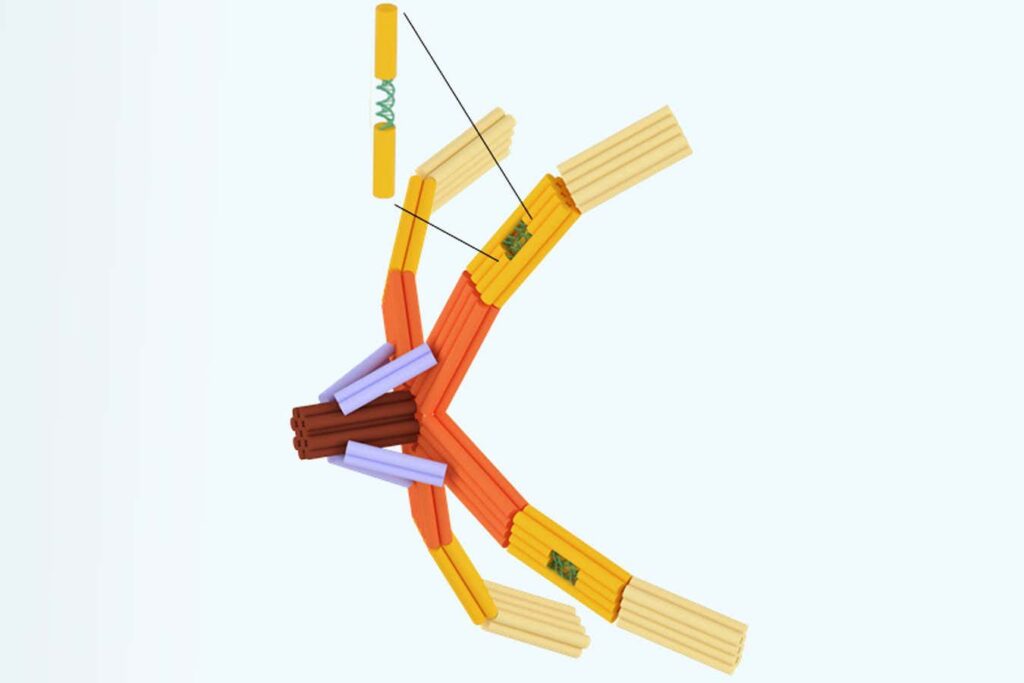
The design of the nanoscale hand that has a central palm and four bendable fingers made of DNA
Lifeng Zhou et al. (2023)
A nanoscale robotic hand with four bendable fingers can grasp objects like gold nanoparticles or viruses.
Xing Wang at the University of Illinois and his colleagues constructed the nanohand using a method called DNA origami, in which a long, single strand of DNA is “stapled” together by shorter DNA pieces that pair with specific sequences on the longer strand. This method can be used to create complex shapes, from maps of the Americas to spinning nanoturbines.
The four fingers of the nanohand are joined to a “palm” to form a cross shape when the hand is open. Each finger is just 71 nanometres long (a nanometre is a billionth of a metre) and has three joints, like a human finger.
The researchers did a series of experiments to show what the hands could be used for. To demonstrate the grasping ability, they added strips of complementary DNA to particles of gold between 50 and 100 nanometres across and the fingers could grasp them.
In another test, they took the fingers and added extra bits of DNA that bind to the spike protein of the SARS-CoV-2 virus. The nanohands could then “grab” viruses and those that had been grabbed were unable to infect cells growing in a culture.
Wang and his colleagues also engineered nanohands to fluoresce when they bound to a specific virus, which could help detect such infectious agents. They are now exploring whether the devices could be used to get drugs into cells, says Wang.
One advantage of the nanohands for such applications is that normal DNA is broken down rapidly by enzymes in the blood, but DNA origami structures are more stable. They can also be made to last longer by using ultraviolet light to create extra bonds between the strands or by coating them in certain polymers, says Wang.
“We have started animal tests, but with different DNA nanostructures, some time ago,” he says.
“The design looks really unique and could inspire others,” says Matthew Aquilina at the University of Edinburgh, UK.
Topics:


